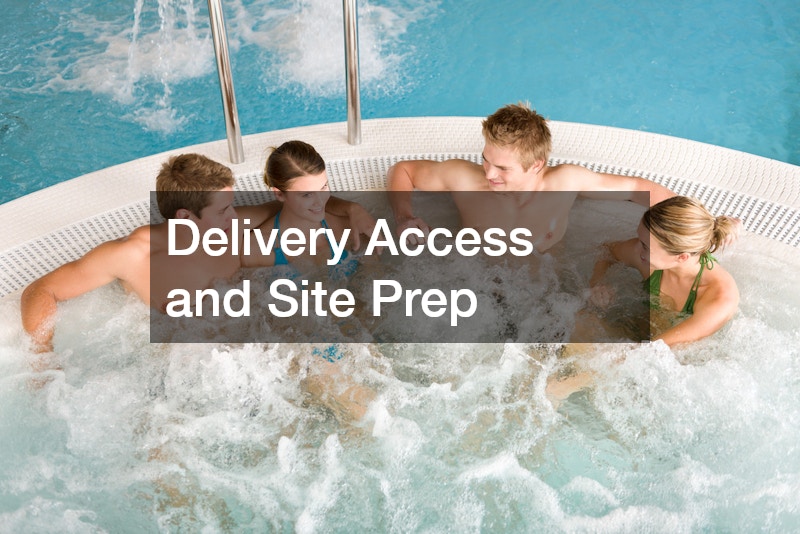Adding a hot tub to your home is one of the best ways to boost comfort, relaxation, and even property value. But before you start the process, there are a few important things to consider. Hot tub installation involves more than simply placing a unit in your yard—it requires planning, preparation, and coordination to ensure long-term enjoyment and safety.
Here’s what you need to know before moving forward with your hot tub project.
Choose the Right Location
Before purchasing a hot tub, take time to evaluate your space. You’ll need a solid, level foundation such as a reinforced deck, patio, or concrete pad.
Avoid placing a hot tub directly on grass or bare ground, as this can lead to structural problems and water drainage issues.
You should also consider the distance from your home. Many people prefer a location close to the back door for easy access, especially during cold months. Think about privacy as well—fencing, landscaping, or pergolas can help shield your hot tub from neighbors or passersby.
Finally, ensure there is adequate clearance around the hot tub for maintenance access. Technicians may need to reach the motor or plumbing system for future repairs.
Check Local Codes and Permits
Many municipalities require permits for hot tub installation. Before you schedule delivery, contact your local building department to ask about zoning regulations, electrical requirements, and safety rules. Some areas may also require inspections before or after installation.
In addition to city codes, homeowners’ associations (HOAs) may have their own restrictions related to size, placement, fencing, or noise. Failing to check these requirements ahead of time can lead to delays or costly corrections later.
Prepare for Electrical Needs
Hot tubs need a reliable power source. Most standard models require a dedicated 220V electrical connection, which must be installed by a licensed electrician. Others may run on a 110V plug-and-play setup, though these tend to be smaller and may not offer the same features.
Before installation, ensure your home’s electrical system can support the hot tub. The unit should be connected to a GFCI (ground fault circuit interrupter) breaker for safety. In some cases, you may need to upgrade your panel to handle the added demand.
Think About Water Drainage
A common oversight during hot tub installation is forgetting about drainage. Hot tubs need to be drained and refilled several times a year, and you’ll want a spot for the water to go that won’t cause flooding or erosion.
Make sure your chosen location is near a proper drainage area such as a gravel bed, french drain, or stormwater system. Never drain a hot tub into your septic system or neighbor’s property, as this can cause damage and lead to legal issues.
Choose the Right Model
Hot tubs come in various sizes, seating arrangements, and jet configurations. Before you decide on a model, consider how you plan to use it. Will it be a space for family fun, personal therapy, or social gatherings?
Look for features that suit your lifestyle—such as ergonomic seating, foot massage jets, lighting, or Bluetooth speakers. Also, consider how many people will be using the tub regularly, as this affects both the size and seating layout you’ll need.
Plan for Maintenance
Hot tub ownership comes with maintenance responsibilities. Water quality needs to be managed with a combination of chlorine, bromine, or salt-based sanitizers, along with regular testing. Filters should be cleaned or replaced on a schedule, and the water should be drained every 3 to 4 months depending on usage.
You’ll also need to monitor the cover and shell for wear and tear. Planning ahead with a regular maintenance routine will keep your hot tub running smoothly and extend its lifespan.
Don’t Forget About Safety
Whether you have young children, pets, or guests around, safety should be top of mind. A locking cover is essential to prevent accidental access, and in many areas, barriers such as fencing or safety gates may be required by law.
Non-slip surfaces around the hot tub help prevent falls, and having easy access to the shutoff switch can protect users during an emergency. If you’re installing steps, choose ones with a handrail and secure grip.
Delivery Access and Site Prep
When scheduling your hot tub delivery, consider the path from the driveway or road to the final location. The unit will need to be moved using a dolly or crane, so make sure there’s enough clearance through gates, between trees, or under power lines.
Remove any obstacles in advance and notify your delivery company of any tight turns or uneven ground. Some installations may require special equipment or extra manpower, so accurate planning can prevent surprises.
Hot tub installation is an exciting project that can transform your outdoor space into a private retreat. By considering site placement, electrical setup, safety, and maintenance early on, you can avoid delays and enjoy a smooth process from start to finish.
With proper planning, you’ll be soaking in warm, bubbling comfort before you know it—whether it’s to unwind after work, ease sore muscles, or host friends under the stars.



